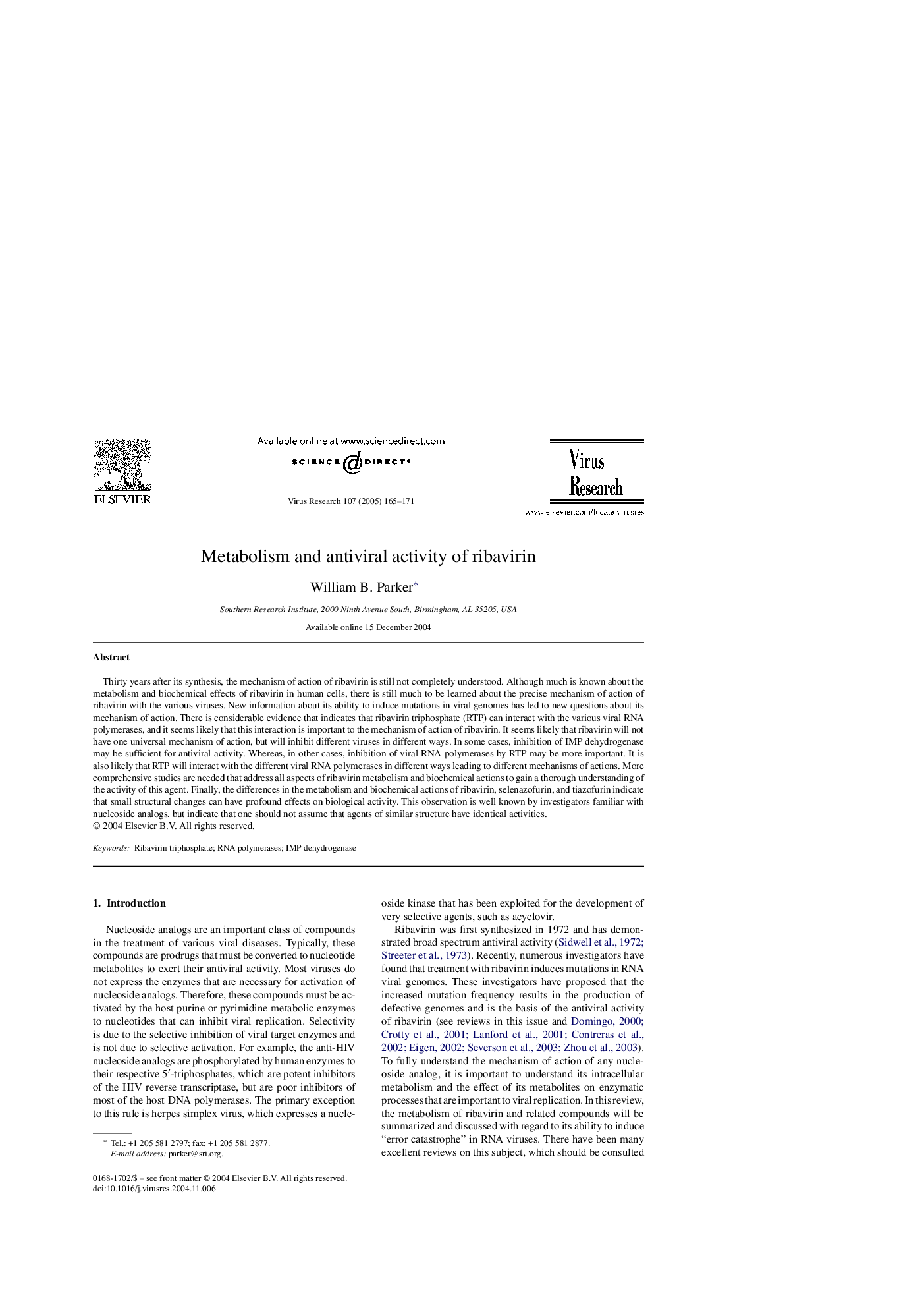| Article ID | Journal | Published Year | Pages | File Type |
|---|---|---|---|---|
| 9289373 | Virus Research | 2005 | 7 Pages |
Abstract
Thirty years after its synthesis, the mechanism of action of ribavirin is still not completely understood. Although much is known about the metabolism and biochemical effects of ribavirin in human cells, there is still much to be learned about the precise mechanism of action of ribavirin with the various viruses. New information about its ability to induce mutations in viral genomes has led to new questions about its mechanism of action. There is considerable evidence that indicates that ribavirin triphosphate (RTP) can interact with the various viral RNA polymerases, and it seems likely that this interaction is important to the mechanism of action of ribavirin. It seems likely that ribavirin will not have one universal mechanism of action, but will inhibit different viruses in different ways. In some cases, inhibition of IMP dehydrogenase may be sufficient for antiviral activity. Whereas, in other cases, inhibition of viral RNA polymerases by RTP may be more important. It is also likely that RTP will interact with the different viral RNA polymerases in different ways leading to different mechanisms of actions. More comprehensive studies are needed that address all aspects of ribavirin metabolism and biochemical actions to gain a thorough understanding of the activity of this agent. Finally, the differences in the metabolism and biochemical actions of ribavirin, selenazofurin, and tiazofurin indicate that small structural changes can have profound effects on biological activity. This observation is well known by investigators familiar with nucleoside analogs, but indicate that one should not assume that agents of similar structure have identical activities.
Related Topics
Life Sciences
Immunology and Microbiology
Virology
Authors
William B. Parker,
